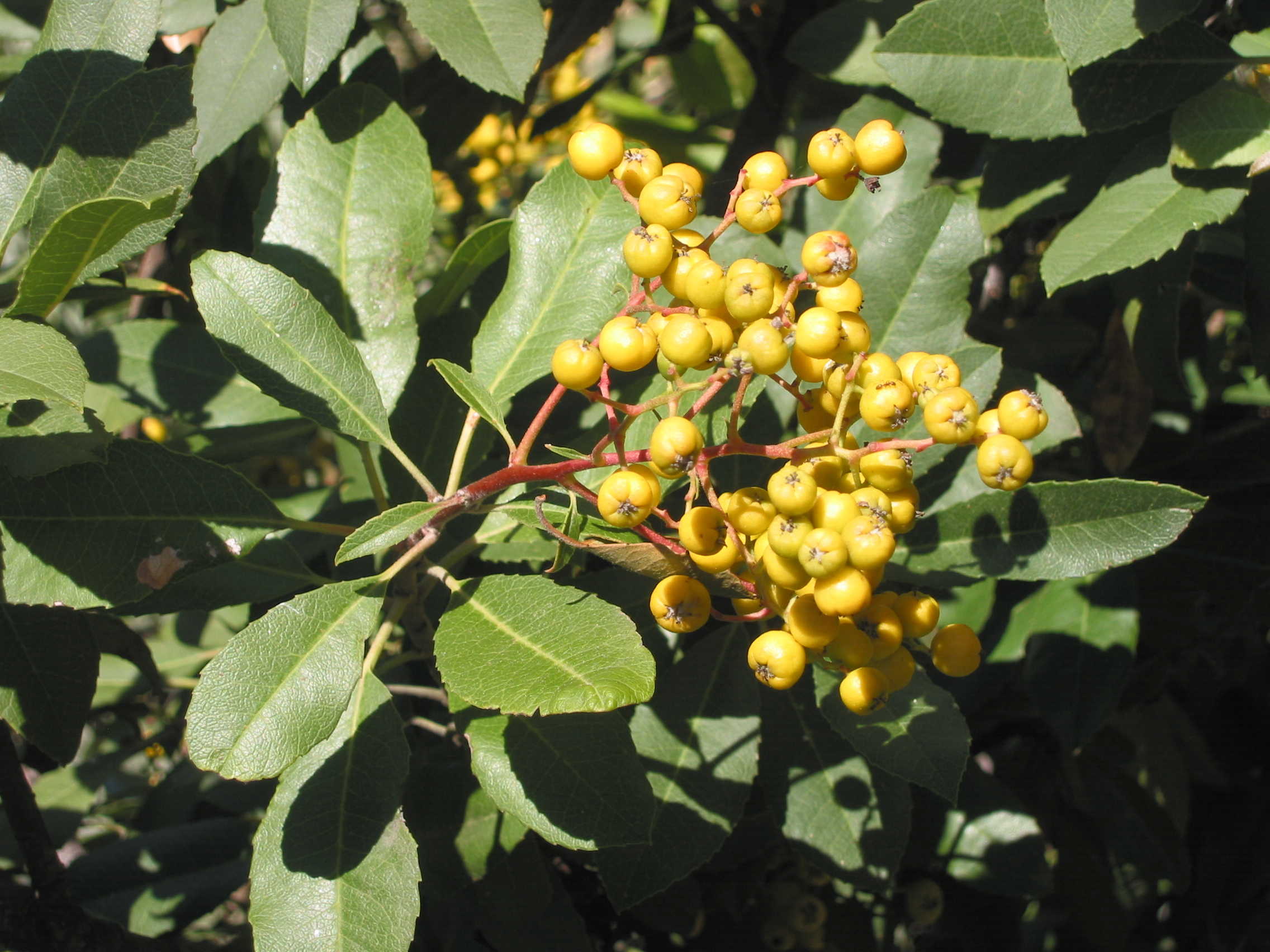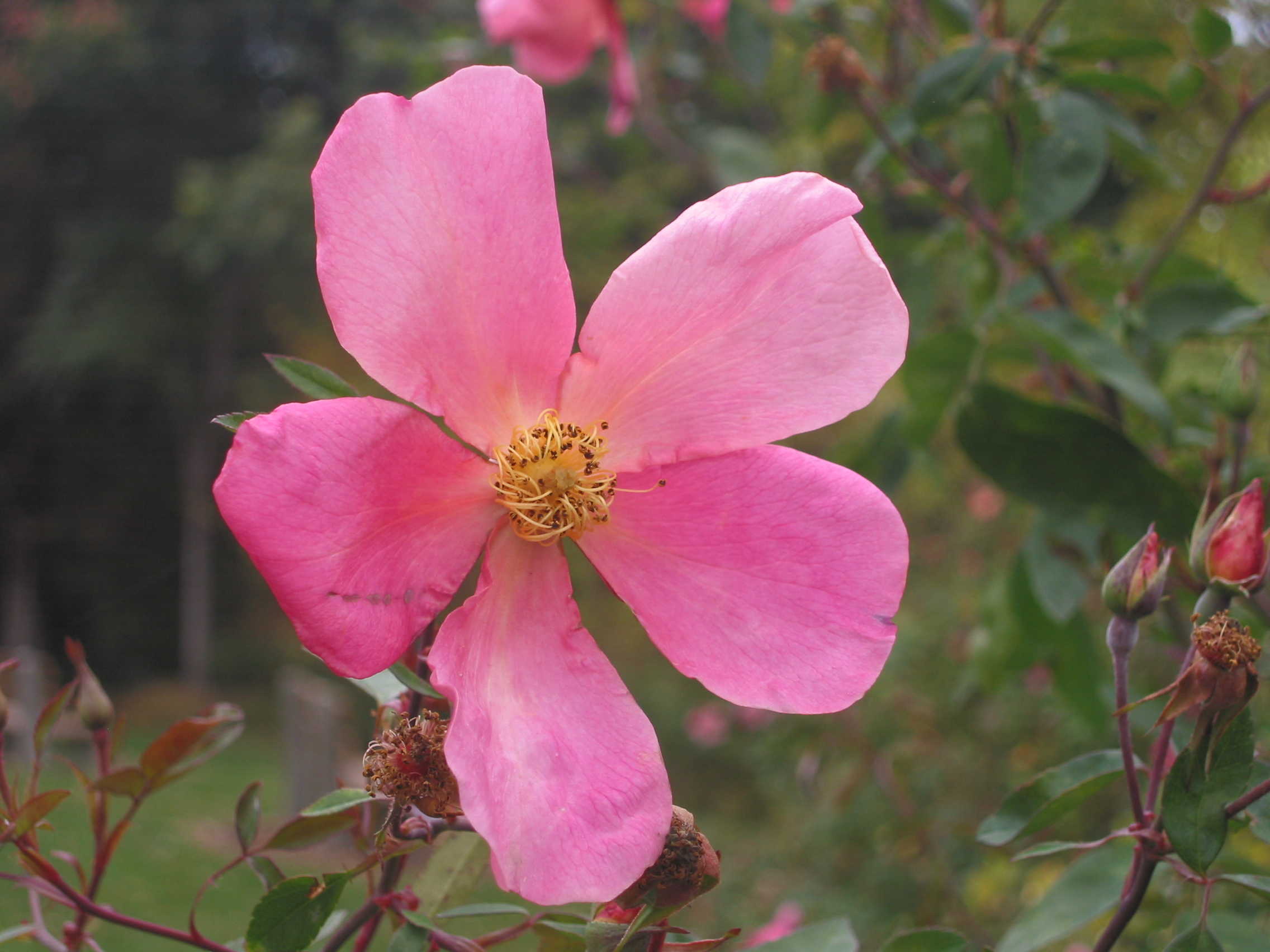About the Arboretum All-Stars
If you're looking for ideas in the "off" gardening seasons - the heat of summer or the waning days of fall - a walk in the arboretum can be helpful. On a sparkling November day I parked near Mrak Hall and wandered east toward the redwood grove, making note of what had seasonal color or interest. Before you even enter the arboretum you can see a plant unique to Davis. Toyon (Heteromeles arbutifolia) is a native shrub whose abundant berries are turning bright red now.Their winter color leads to a second common name: California Christmasberry. A number of years ago a yellow-fruited variant occurred, and a nice specimen is growing just at the corner of Old Davis Road where you turn in towards Mrak Hall. This variety is now called 'Davis Gold'. While you might think a yellow berry would be less interesting than the seasonal red of the traditional species, I noted that the lighter-colored fruit stands out better against the dark green foliage.

This popular native shrub grows slowly to 10' or more, with flowers that attract beneficial insects and winter berries that attract songbirds. The species, shown at top, typically has red berries, but this golden-fruited variety called 'Davis Gold' originated right here at the UC Davis Arboretum. Check their sales for availability, as it is uncommon in the trade.
A flash of color around on the west side of Putah Creek drew my eye. Rosa chinensis 'Mutabilis' is a very robust old China rose that has a unique quality: the blossoms open light apricot-yellow, then (contrary to most flowers) darken as they age through pink to red (hence the name "mutabilis"). The blossoms are a single row of papery petals, usually twisted and splayed. With upright petals in all colors, all on the plant at the same time, it has sometimes been called the Butterfly rose because it looks as though dozens of butterflies have alighted on the bush.

The Butterfly rose is usually listed in references as Rosa chinensis 'Mutabilis', but the Arboretum All-Star list now has it under the name R. x odorata 'Mutabilis'. The delicate-looking flowers consist of a single row of petals which open yellow, then darken through pink to red. Dozens of blooms are open on the plant at a time, from April through November.
This is a large shrub! It can reach a height of 7 - 8' tall with equal spread.
(I notice that Rosa x odorata 'Mutabilis' is the currently accepted name of the Butterfly rose used on the All-Star list, but nearly every other reference is likely to have it by the older name I used above. Someday I will write a column about why taxonomists change plant names.)
A few years ago the staff at the arboretum began compiling a list of plants that do well in the Sacramento Valley. The stated basis for selection as an All-Star: "100 tough, reliable plants that have been tested in the Arboretum, are easy to grow, don't need a lot of water, have few problems with pests or diseases, and have outstanding qualities in the garden. Many of them are California native plants and support native birds and insects. ... The vast majority of All-Star plants can also be successfully planted and grown throughout California."
I love this list, but frankly it is beginning to drive retailers and landscapers a little crazy. Not because of the list itself or the plants on it, but because of public misconceptions about it. It is not intended as a definitive list for the region, and availability can be a problem.
If I were making any criticisms, it would be that some of the plants are easy to kill: winter daphne, and natives such as ceanothus, manzanita, and western redbud are all notoriously easy to over-water. Some plants tolerate drought while others require it; many California natives are vulnerable to crown rot fungus caused by summer watering. The list is light on trees, and those selected are mostly unavailable in the nursery trade (perhaps their inclusion here will interest some wholesale growers in propagating them). But those are minor concerns, and I have been told that another 50 or so recommendations are on their way.
What it is:
An excellent list of many plants that do well in our area.A great starting point as you select plants for your landscape design. With two ferns, seven grasses, 35 perennials, 42 shrubs, 8 trees, 6 vines, you can find ideas for a new landscape or a renovation project. One-third of them are California natives. Many are unusual, perhaps helping you think outside of the traditional options.
What it is not:
Read more



Thanks for the great post...I always appreciate your articles and posts.
ReplyDeletebtw, Daisy Mah has a beautiful, full-sized Mutabilis at the WPA garden at Land Park